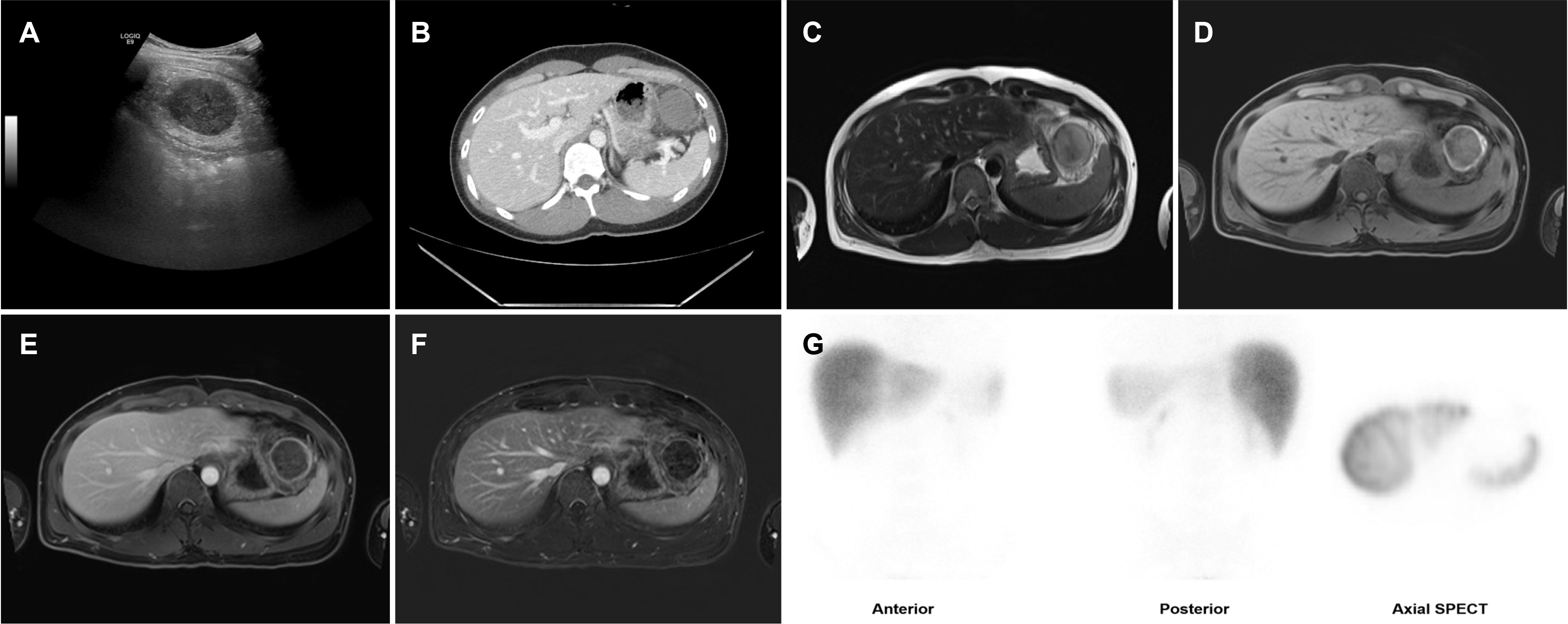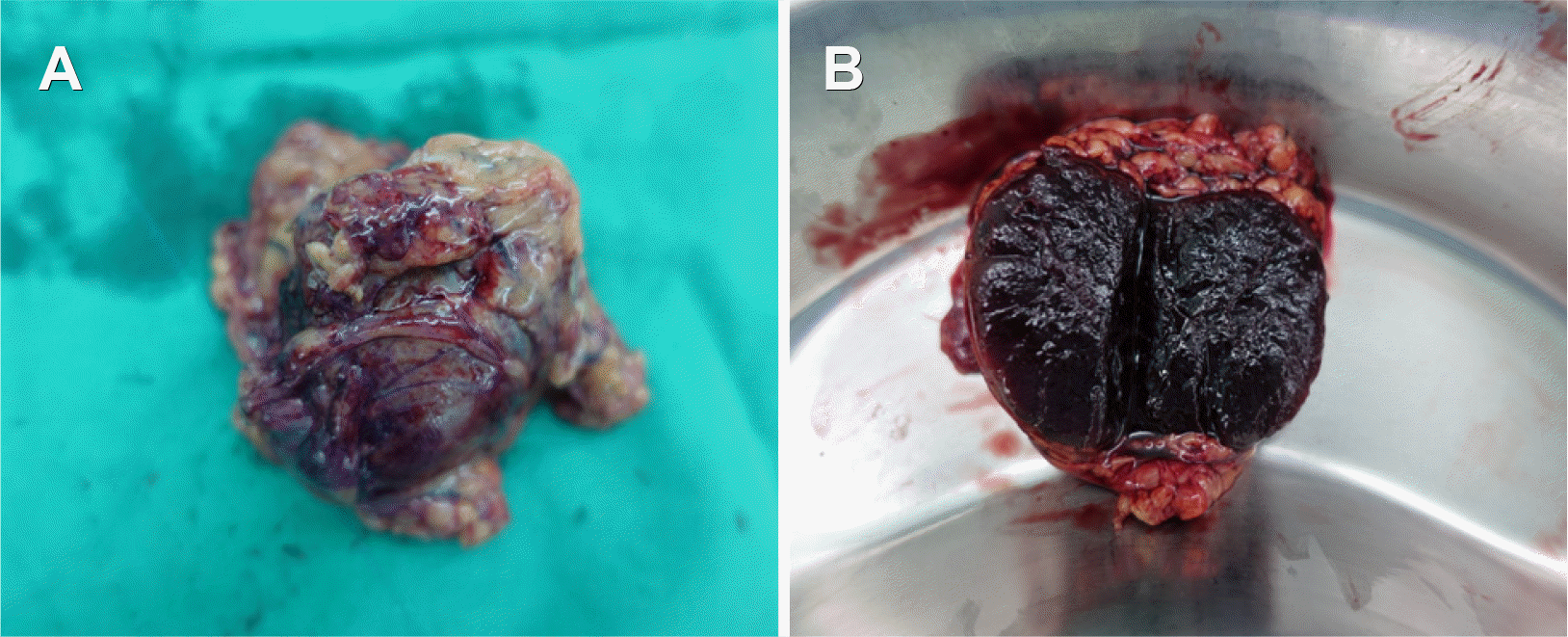1. Morgenstern L, Skandalakis JE. Hiatt JR, Phillips EH, Morgenstern L, editors. 1997. Anatomy and embryology of the spleen. Surgical diseases of the spleen. Springer;Berlin, Heidelberg: p. 15–24. DOI:
10.1007/978-3-642-60574-1_2. PMID:
8996481.

2. Yildiz AE, Ariyurek MO, Karcaaltincaba M. 2013; Splenic anomalies of shape, size, and location: pictorial essay. ScientificWorldJournal. 2013:321810. DOI:
10.1155/2013/321810. PMID:
23710135. PMCID:
PMC3654276.

3. Varga I, Babala J, Kachlik D. 2018; Anatomic variations of the spleen: current state of terminology, classification, and embryological background. Surg Radiol Anat. 40:21–29. DOI:
10.1007/s00276-017-1893-0. PMID:
28631052.

4. Mohammadi S, Hedjazi A, Sajjadian M, Ghrobi N, Moghadam MD, Mohammadi M. 2016; Accessory spleen in the splenic hilum: a cadaveric study with clinical significance. Med Arch. 70:389–391. DOI:
10.5455/medarh.2016.70.389-391. PMID:
27994303. PMCID:
PMC5136441.

5. Varga I, Galfiova P, Adamkov M, et al. 2009; Congenital anomalies of the spleen from an embryological point of view. Med Sci Monit. 15:RA269–RA276.
6. Rashid SA. 2014; Accessory spleen: prevalence and multidetector CT appearance. Malays J Med Sci. 21:18–23.
7. Ko HS, Goo HW, Yoon CH. 2004; Unusual infarction of the accessory spleen or polysplenia in two children: case report. J Korean Radiol Soc. 51:555–558. DOI:
10.3348/jkrs.2004.51.5.555.

8. Babcock TL, Coker DD, Haynes JL, Conklin HB. 1974; Infarction of an accessory spleen causing an acute abdomen. Am J Surg. 127:336–337. DOI:
10.1016/0002-9610(74)90044-0.

11. Sheth H, Chaudhari S, Sinha Y, Prajapati R. 2018; Infarcted accessory spleen masquerading as a mesenteric cyst. BMJ Case Rep. 2018:bcr2018226130. DOI:
10.1136/bcr-2018-226130. PMID:
30115724. PMCID:
PMC6101306.

12. Yousef Y, Cameron BH, Maizlin ZV, Boutross-Tadross O. 2010; Laparoscopic excision of infarcted accessory spleen. J Laparoendosc Adv Surg Tech A. 20:301–303. DOI:
10.1089/lap.2009.0286. PMID:
20059391.

13. Ishibashi H, Oshio T, Sogami T, Nii A, Mori H, Shimada M. 2012; Torsion of an accessory spleen with situs inversus in a child. J Med Invest. 59:220–223. DOI:
10.2152/jmi.59.220. PMID:
22450011.

14. Simon DA, Fleishman NR, Choi P, Fraser JD, Fischer RT. 2020; Torsion of an accessory spleen in a child with biliary atresia splenic malformation syndrome. Front Pediatr. 8:220. DOI:
10.3389/fped.2020.00220. PMID:
32432066. PMCID:
PMC7212802.

15. Ozeki M, Asakuma M, Go N, et al. 2015; Torsion of an accessory spleen: a rare case preoperatively diagnosed and cured by single-port surgery. Surg Case Rep. 1:100. DOI:
10.1186/s40792-015-0101-x. PMID:
26943424. PMCID:
PMC4596154.

16. Sadro CT, Lehnert BE. 2015; Torsion of an accessory spleen: case report and review of the literature. Radiol Case Rep. 8:802. DOI:
10.2484/rcr.v8i1.802. PMID:
27330618. PMCID:
PMC4900206.

17. Nishiguchi S, Habu D, Ishizu H, et al. 2001; Accessory spleen in the pelvis diagnosed by Tc-99m phytate scintigraphy. Ann Nucl Med. 15:263–265. DOI:
10.1007/BF02987843. PMID:
11545199.

18. Kim SH, Lee JM, Han JK, et al. 2008; Intrapancreatic accessory spleen: findings on MR Imaging, CT, US and scintigraphy, and the pathologic analysis. Korean J Radiol. 9:162–174. DOI:
10.3348/kjr.2008.9.2.162. PMID:
18385564. PMCID:
PMC2627219.

19. Chung YH, Park HJ, Park IS, et al. 2009; An epidermoid cyst in an intrapancreatic accessory spleen. Korean J Med. 76:742–745.
20. Im CJ, Kweon JH, Hwang ET, et al. 2009; An intrapancreatic accessory spleen mimicking a tumor of the pancreas. Korean J Med. 77:S326–S331.
21. Kim JH, Chung KH, Oh SY, et al. 2014; Two cases of epidermoid cysts in the intrapancreatic accessory spleen mimicking pancreatic cystic neoplasm. Korean J Pancreas Biliary Tract. 19:52–58. DOI:
10.15279/kpba.2014.19.1.52.

22. Ko HJ, Shim JR, Lee TB, et al. 2020; Epidermoid cyst in an intrapancreatic accessory spleen in the pancreas head: a case report. BMC Gastroenterol. 20:392. DOI:
10.1186/s12876-020-01540-4. PMID:
33218300. PMCID:
PMC7678289.

23. Barawi M, Bekal P, Gress F. 2000; Accessory spleen: a potential cause of misdiagnosis at EUS. Gastrointest Endosc. 52:769–772. DOI:
10.1067/mge.2000.108666. PMID:
11115915.

24. Renno A, Hill M, Abdel-Aziz Y, Meawad H, Lenhard A, Nawras A. 2020; Diagnosis of intrapancreatic accessory spleen by endoscopic ultrasound-guided fine-needle aspiration mimicking a pancreatic neoplasm: a case report and review of literature. Clin J Gastroenterol. 13:287–297. DOI:
10.1007/s12328-019-01045-y. PMID:
31549337.

25. Fritscher-Ravens A, Mylonaki M, Pantes A, Topalidis T, Thonke F, Swain P. 2003; Endoscopic ultrasound-guided biopsy for the diagnosis of focal lesions of the spleen. Am J Gastroenterol. 98:1022–1027. DOI:
10.1111/j.1572-0241.2003.07399.x. PMID:
12809823.







 PDF
PDF Citation
Citation Print
Print




 XML Download
XML Download